26.12.2021
Yardangs not only reveal the strength and direction of historic winds, but also reveal something of the host rock itself.
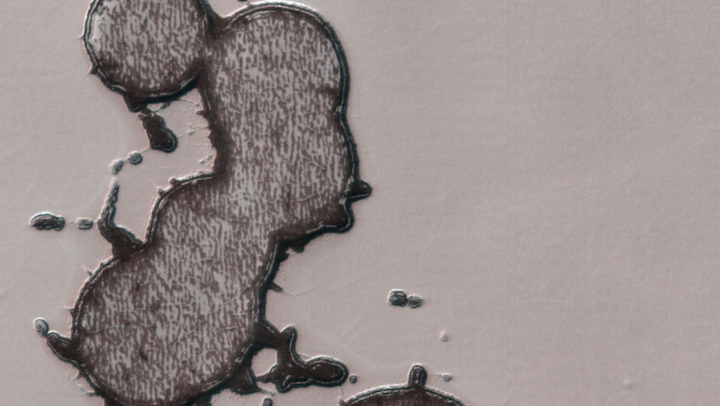
Mr. Peanut
The south polar residual cap is constantly changing as carbon dioxide sublimates from steep slopes, enlarging pits, and condenses on flat areas, filling pits.
Sometimes the strange landscape produces something that looks familiar, like the mascot of a certain peanut company, who recently died in a commercial, and was “creamated” according to “Saturday Night Live.”
At least, he still has Mars.
+++
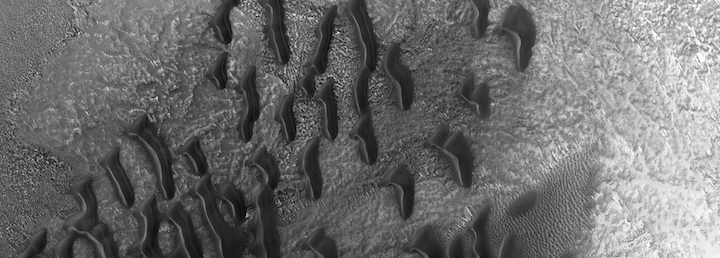
Boundary Condition Controls on the High-Sand-Flux Regions of Mars
Matthew Chojnacki, Maria E. Banks, Lori K. Fenton, and Anna C. Urso
Abstract
Wind has been an enduring geologic agent throughout the history of Mars, but it is often unclear where and why sediment is mobile in the current epoch. We investigated whether eolian bed-form (dune and ripple) transport rates are depressed or enhanced in some areas by local or regional boundary conditions (e.g., topography, sand supply/availability).
+++
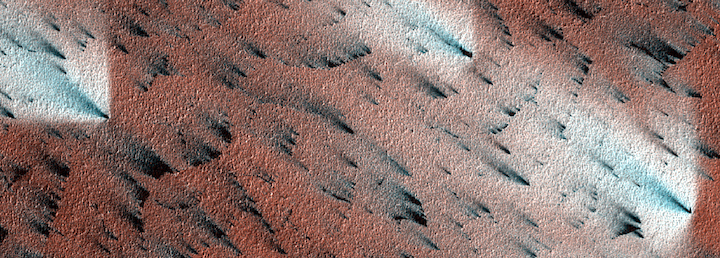
Planet Four: Probing Springtime Winds on Mars by Mapping the Southern Polar CO2 Jet Deposits
K.-Michael Aye, Megan E.Schwamb, Ganna Portyankina, Candice J.Hansen, Adam McMaster, Grant R.M. Miller, Brian Carstensen, Christopher Snyder, Michael Parrish, Stuart Lynn, Chuhong Maic, David Miller, Robert J. Simpson, Arfon M.Smith
Abstract
The springtime sublimation process of Mars’ southern seasonal polar CO2 ice cap features dark fan-shaped deposits appearing on the top of the thawing ice sheet. The fan material likely originates from the surface below the ice sheet, brought up via CO2 jets breaking through the seasonal ice cap. Once the dust and dirt is released into the atmosphere, the material may be blown by the surface winds into the dark streaks visible from orbit.
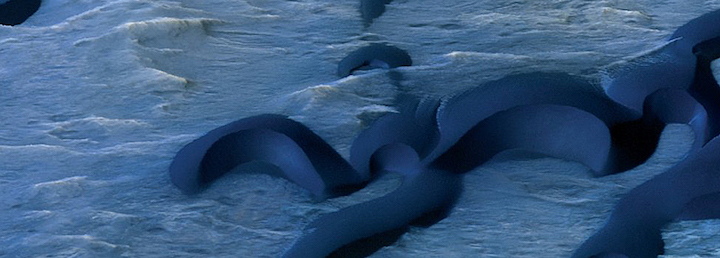
Wind-Driven Erosion and Exposure Potential at Mars 2020 Rover Candidate-Landing Sites
Matthew Chojnacki, Maria Banks, and Anna Urso
Abstract
Wind-blown dune sand can wear away the Martian surface and uncover geologic units, which have not been exposed to prolonged space radiation. We studied migrating sand dunes at the eight potential Mars 2020 Rover landing sites, a mission that will explore astrobiologically relevant ancient environments. These locations may be favorable for the preservation of ancient life and organics for sampling by future Mars missions, including the Mars 2020 mission. Results indicate that candidate sites at Syrtis Major and Jezero crater showed the most evidence for ongoing sand transport and erosion potential.
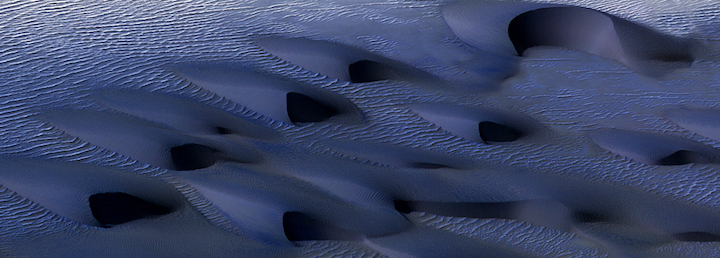
Aeolian Dune Sediment Flux Heterogeneity in Meridiani Planum, Mars
Matthew Chojnacki, Anna Urso, Lori K. Fenton, Timothy I. Michaels
Abstract
It is now known unambiguously that wind-driven bedform activity is occurring on the surface of Mars today, including early detections of active sand dunes in Meridiani Planum’s Endeavour crater. Many of these reports are only based on a few sets of observations of relatively isolated bedforms and lack regional context.Here, we investigate aeolian activity across central Meridiani Planum and test the hypothesis that dune sites surrounding Endeavour crater are also active and part of region-wide sediment migration driven by northwesterly winds. All 13 dune fields investigated clearly showed evidence for activity and the majority exhibited dune migration (average rates of 0.6 m/Earth-year).Observations indicate substantial geographic and temporal heterogeneity of dune crest fluxes across the area and per site. Locations with multiple time steps indicate dune sand fluxes can vary by a factor of five, providing evidence for short periods of rapid migration followed by near-stagnation. In contrast, measurements at other sites are nearly identical, indicating that some dunes are in a steady-state as they migrate. The observed sediment transport direction was consistent with a regional northeasterly-to-northwesterly wind regime, revealing more variations than were appreciated from earlier, more localized studies. Craters containing shallow, degraded, flat-floored interiors tended to have dunes with high sediment fluxes/activity, whereas local kilometer-scale topographic obstructions (e.g., central peaks, yardangs) were found to be inversely correlated with dune mobility. Finally, the previous, more limited detections of dune activity in Endeavour crater have been shown to be representative of a broader, region-wide pattern of dune motion.
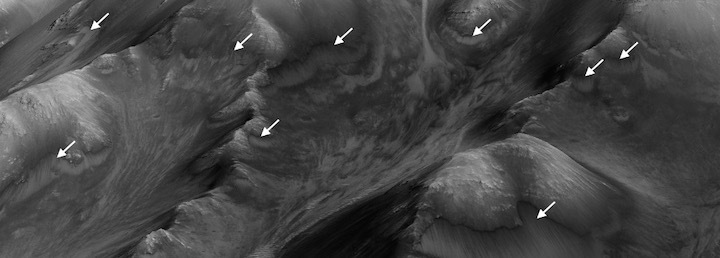
Geologic Context of Recurring Slope Lineae in Melas and Coprates Chasmata, Mars
Matthew Chojnacki, Alfred McEwen, Colin Dundas, Lujendra Ojha, Anna Urso, and Sarah Sutton.
Abstract
One of the major Mars discoveries of recent years is the existence of Recurring Slope Lineae (RSL), which suggests that liquid water occurs on or near the surface of Mars today. These dark and narrow features emerge from steep, rocky exposures, and incrementally grow, fade, and re-form on a seasonal basis and are detected in images from the High Resolution Imaging Science Experiment (HiRISE) camera. RSL are known to occur at scattered mid-latitude and equatorial sites with little spatial connection to one another. One major exception is the steep, low-albedo slopes of Melas and Coprates Chasmata, in Valles Marineris where RSL are detected among diverse geologic surfaces (e.g., bedrock, talus) and landforms (e.g., inselbergs, landslides). New images show topographic changes including sediment deposition on active RSL slopes. Mid-wall locations in Coprates and Melas appear to have more areally extensively abundant RSL and related fans as compared with other RSL sites found on Mars. Water budget estimates for regional RSL are on the order of 105 to 106 m3 of fluid, for depths of 10 to 100 mm, and suggest a significant amount of near-surface water might be present. Many RSL are concentrated near local topographic highs, such as ridge crests or peaks, which is challenging to explain via groundwater or ice without a recharge mechanism. Collectively, results provide additional support for the notion that significant amounts of near-surface water can be found on Mars today, and suggest a widespread mechanism, possibly related to the atmosphere, is recharging RSL sources.
Quelle: University of Arizona, HiRISE Operations Center
